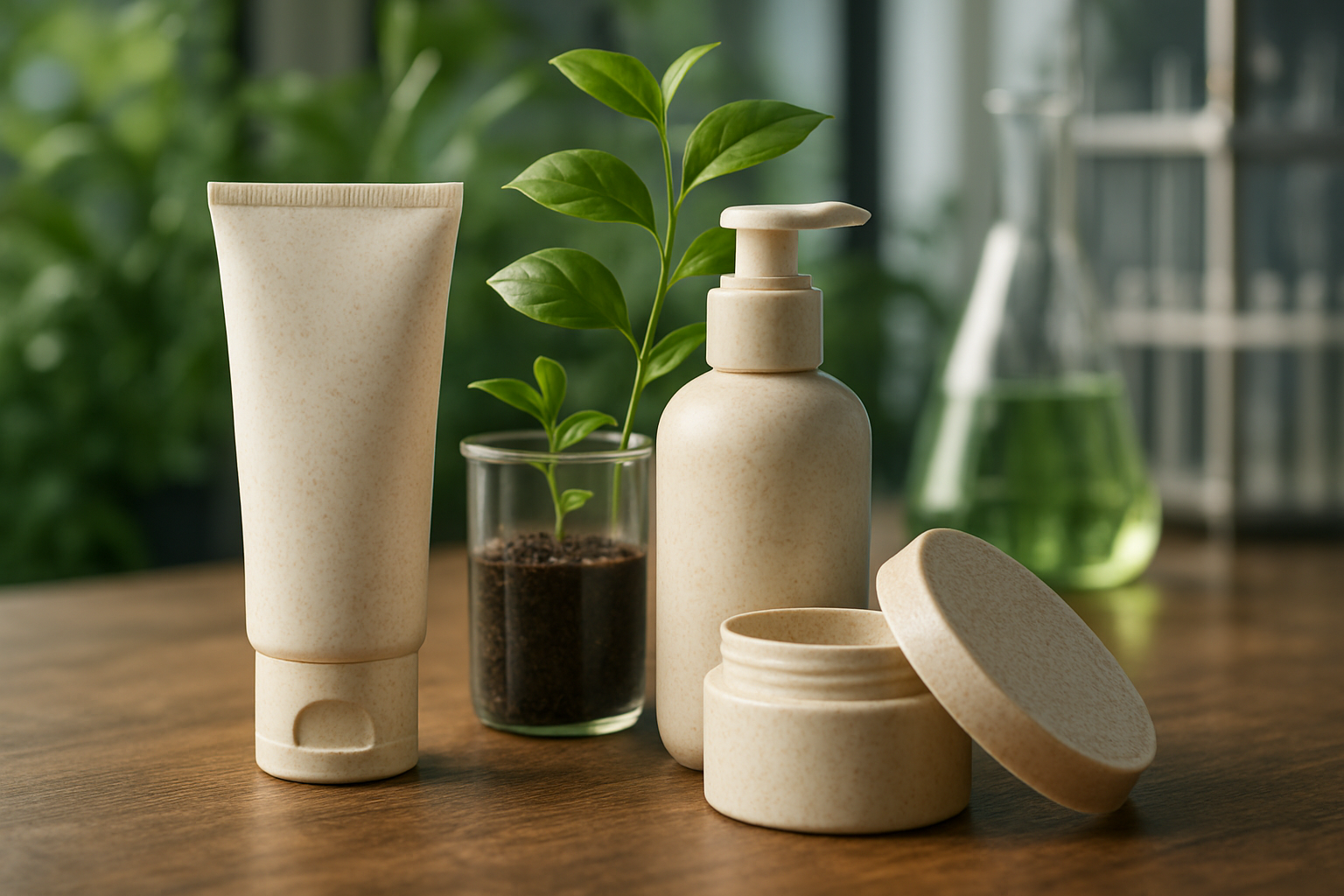Bioplastics in Beauty: The Future of Sustainable Packaging
The beauty industry is undergoing a radical transformation, with sustainability at the forefront of innovation. One of the most promising developments in this arena is the rise of bioplastics in beauty packaging. This groundbreaking shift away from traditional petroleum-based plastics represents a significant step towards reducing the environmental impact of cosmetics and personal care products. As consumers become increasingly eco-conscious, brands are reimagining their packaging strategies, turning to nature-derived materials that offer both functionality and biodegradability. The emergence of bioplastics in beauty packaging not only addresses environmental concerns but also opens up new avenues for creative design and brand differentiation in a highly competitive market.

Early pioneers in the beauty sector began experimenting with bioplastic packaging in the late 2000s, primarily focusing on small-scale items like sample containers and single-use applicators. However, as technology advanced and consumer demand for sustainable options increased, larger beauty brands started to invest in research and development of bioplastic alternatives for their mainstream product lines.
Types of Bioplastics Used in Beauty Packaging
The world of bioplastics is diverse, with various materials offering different properties and benefits for beauty packaging. One of the most popular options is polylactic acid (PLA), derived from fermented plant starch. PLA is biodegradable and compostable under specific conditions, making it an attractive choice for brands looking to reduce their environmental footprint.
Another promising bioplastic is polyhydroxyalkanoates (PHAs), which are produced by microorganisms through the fermentation of sugar or lipids. PHAs are particularly interesting for beauty packaging due to their biodegradability in marine environments, addressing concerns about plastic pollution in oceans.
Cellulose-based bioplastics, derived from wood pulp or cotton linters, offer excellent barrier properties and are ideal for products that require protection from moisture and oxygen. These materials are gaining popularity in the packaging of natural and organic beauty products.
Benefits and Challenges of Bioplastic Beauty Packaging
The adoption of bioplastics in beauty packaging offers numerous benefits. Firstly, it significantly reduces reliance on fossil fuels, as these materials are derived from renewable resources. This shift helps to lower the carbon footprint of beauty products throughout their lifecycle. Additionally, many bioplastics are biodegradable or compostable, potentially reducing the amount of plastic waste that ends up in landfills or oceans.
From a brand perspective, bioplastic packaging can serve as a powerful marketing tool, appealing to environmentally conscious consumers and enhancing brand image. It also aligns with the growing trend of clean beauty, which emphasizes natural, sustainable ingredients and packaging.
However, the transition to bioplastics is not without challenges. Cost remains a significant hurdle, as bioplastics are generally more expensive to produce than traditional plastics. There are also concerns about the performance of some bioplastics, particularly in terms of durability and shelf life for certain beauty products. Additionally, the biodegradability of these materials often requires specific conditions that may not be available in all waste management systems.
Innovation and Future Trends
As the demand for sustainable packaging grows, beauty brands and material scientists are pushing the boundaries of bioplastic innovation. One exciting development is the creation of bioplastics from beauty industry by-products. For example, researchers are exploring ways to use discarded fruit peels and seeds from personal care product manufacturing to create packaging materials, effectively closing the loop in production.
Another trend is the development of hybrid materials that combine bioplastics with other sustainable elements. These include packaging made from a mixture of bioplastic and recycled paper fibers, offering improved recyclability and a unique aesthetic appeal.
The future of bioplastics in beauty packaging also involves enhancing the end-of-life options for these materials. Innovations in composting technology and infrastructure aim to make it easier for consumers to properly dispose of bioplastic packaging, ensuring that the materials fulfill their potential for biodegradability.
Impact on Consumer Behavior and Industry Standards
The introduction of bioplastic packaging in the beauty industry is having a profound effect on consumer behavior and expectations. As more brands adopt these materials, consumers are becoming increasingly aware of the environmental impact of their beauty routines. This shift in consciousness is driving demand for sustainable options across all product categories, from skincare to makeup.
Industry standards are also evolving in response to the bioplastic revolution. Certifications and guidelines for biodegradable and compostable materials are being developed and refined, providing clarity for both brands and consumers. These standards help to prevent greenwashing and ensure that claims about sustainability are backed by scientific evidence.
Moreover, the adoption of bioplastics is encouraging a broader conversation about sustainability in the beauty industry. Brands are now looking beyond packaging to consider the environmental impact of their entire supply chain, from ingredient sourcing to manufacturing processes.
In conclusion, the integration of bioplastics into beauty packaging represents a significant step towards a more sustainable future for the industry. While challenges remain, the continued innovation in this field promises to revolutionize the way we think about and interact with beauty products. As brands, consumers, and researchers collaborate to overcome current limitations, bioplastics are poised to become an integral part of the beauty landscape, offering a harmonious blend of functionality, aesthetics, and environmental responsibility.





